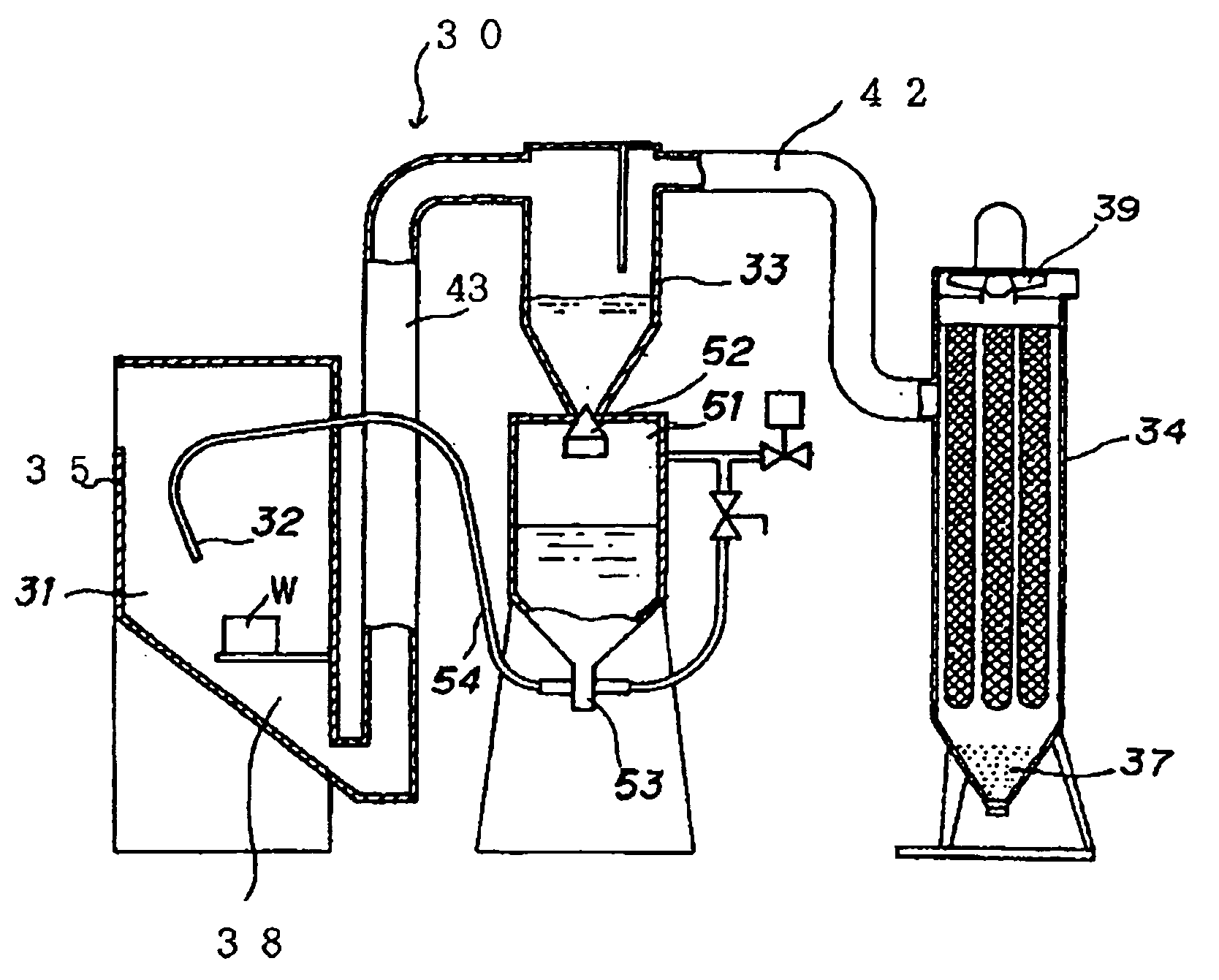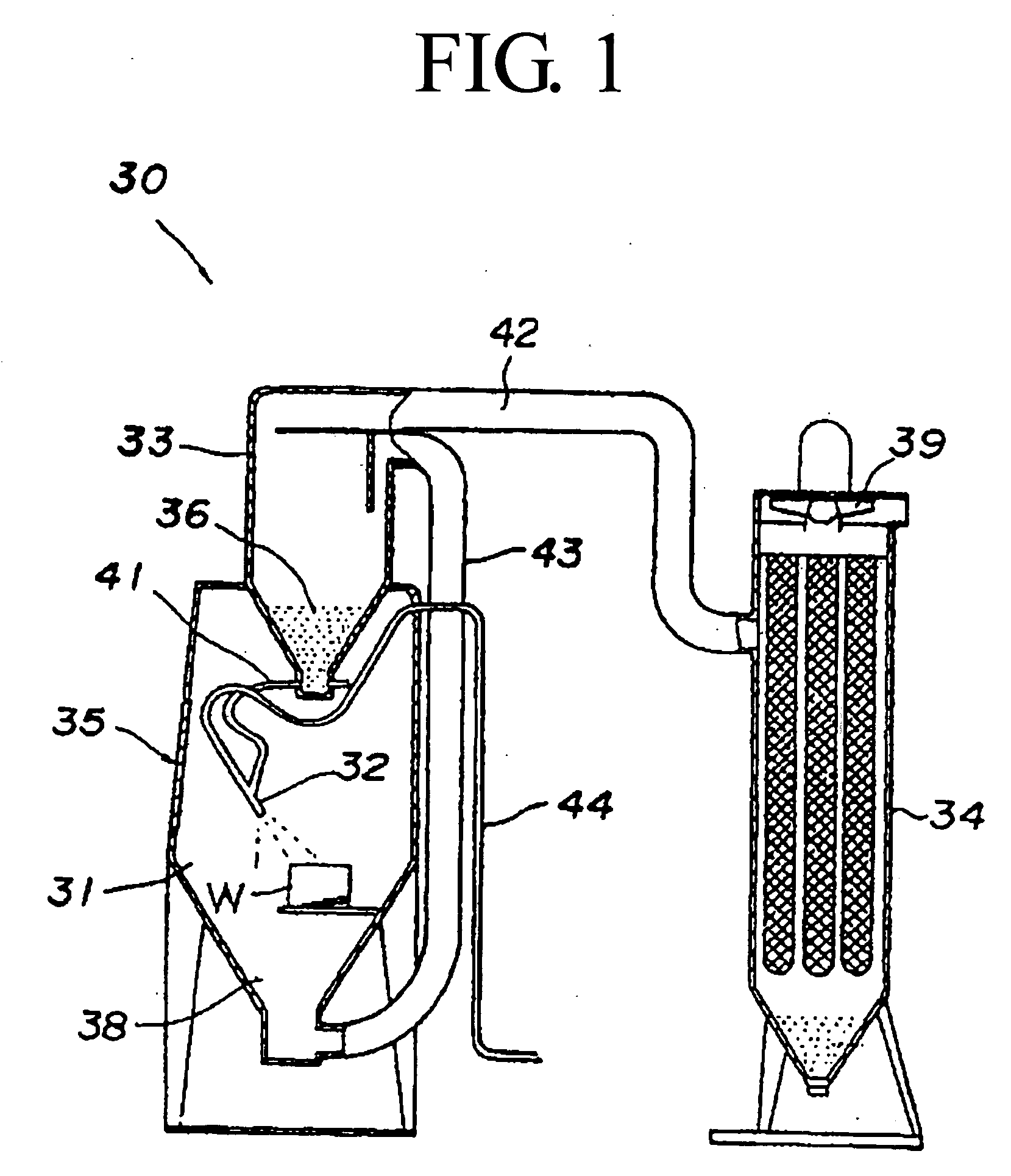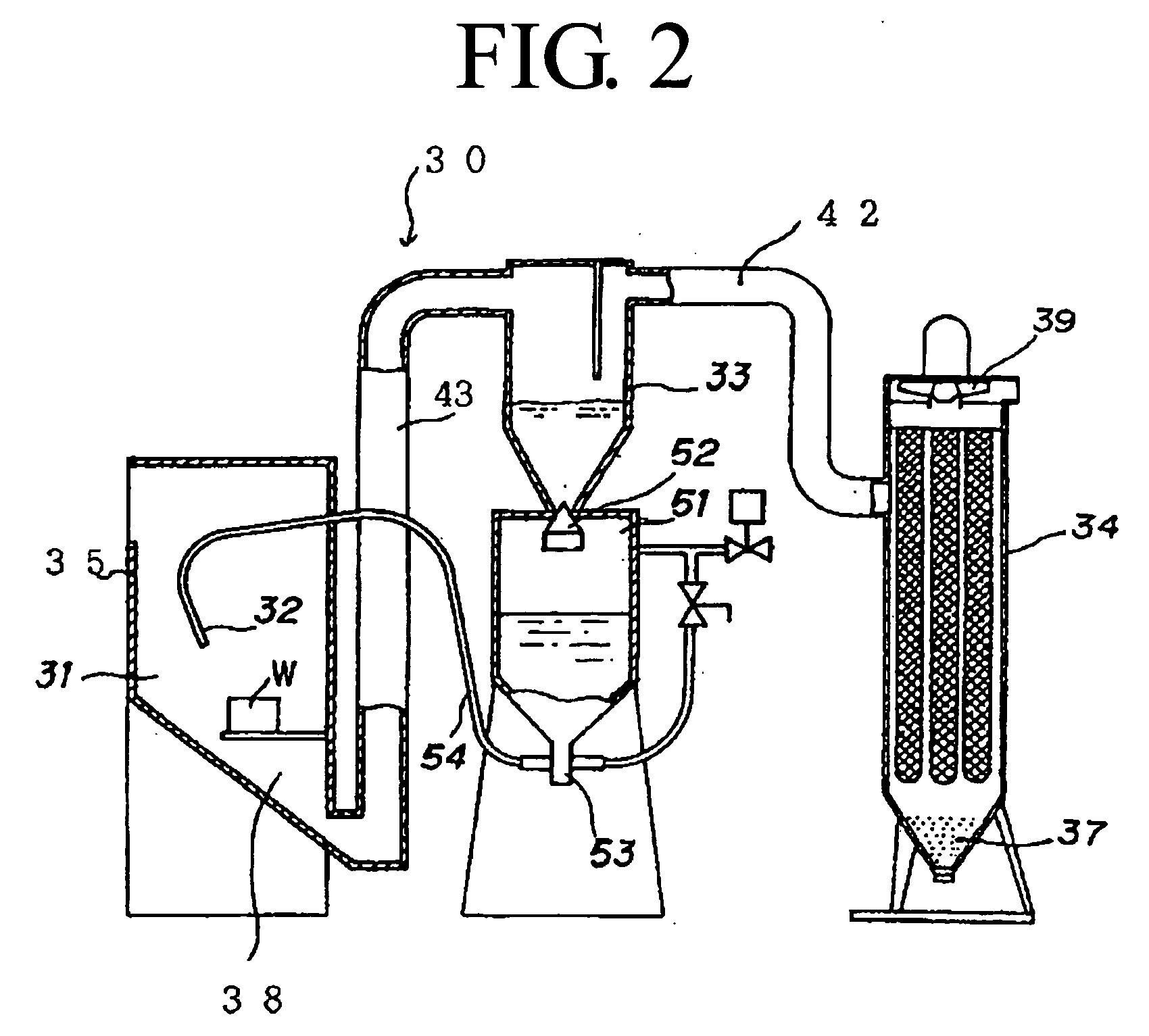Abrasive cleaning agent, method for manufacturing the same, and method for polishing using abrasive cleaning agent
a technology of abrasive cleaning agent and abrasive grains, which is applied in the direction of manufacturing tools, other chemical processes, chemistry apparatus and processes, etc., can solve the problems of affecting the effect of ejecting energy, dust in the air, and the like, and achieves the effect of reducing the energy required for ejecting, reducing the amount of ejecting energy, and increasing the environmental burden
- Summary
- Abstract
- Description
- Claims
- Application Information
AI Technical Summary
Benefits of technology
Problems solved by technology
Method used
Image
Examples
example 1
[0078]To a pulverized powder between size #46 (average particle diameter: approximately 350 μm) and #60 (average particle diameter: approximately 250 μm) obtained by drying and pulverizing tubers of devil's tongue, 20 percent by weight of water was added and absorbed, thereby forming 500 grams of an elastic material. To this elastic material, 50 grams of abrasive grains of SiC of size #800 (average of average particle diameter: 22.0 to 18.0 μm) was added so as to adhere to surfaces of the elastic material, thereby forming the abrasive cleaning agent of the present invention.
[0079]This abrasive cleaning agent was ejected using a sandblasting machine (gravity-type, “SGF-4” manufactured by Fuji Manufacturing Co., Ltd.) for treatment. The process conditions of this Example were as shown in the following Table 1.
TABLE 1Process Conditions (Example 1)Blasting MachineGravity typeEject Pressure0.1 MPaEject Nozzle Diameter9 mmNozzle Distance100 to 150 mmNozzle Angle30°
example 2
[0080]To a pulverized powder between size #60 and #80 obtained by drying and pulverizing tubers of devil's tongue, 20 percent by weight of water was added and absorbed, thereby forming 500 grams of an elastic material. To this elastic material, 50 grams of glass beads (“EMB-20” manufactured by Potters-Ballotini Co., Ltd.; average particle diameter: 10 μm) was added so as to adhere to surfaces of the elastic material, thereby forming an abrasive cleaning agent.
[0081]This abrasive cleaning agent was ejected using a sandblasting machine (gravity-type, “SGF-4” manufactured by Fuji Manufacturing Co., Ltd.) for treatment. The process conditions in this Example were as shown in the following Table 2.
TABLE 2Process Conditions (Example 2)Blasting MachineGravity typeEject Pressure0.05 MPaEject Nozzle Diameter9 mmNozzle Distance100 to 150 mmNozzle Angle30°
example 3
[0082]To a pulverized powder between size #60 and #80 (average particle diameter: 250 to 149 μm) obtained by drying and pulverizing tubers of devil's tongue, 20 percent by weight of water was added and absorbed, thereby forming 500 grams of an elastic material. To this elastic material, 50 grams of abrasive grains of SiC of size #3000 (average particle diameter: 5.9 to 4.7 μm) was added so as to adhere to surfaces of the elastic material, thereby forming an abrasive cleaning agent.
[0083]This abrasive cleaning agent was ejected using a sandblasting machine (gravity-type, “SGF-4” manufactured by Fuji Manufacturing Co., Ltd.) for treatment. The process conditions in this Example were as shown in the following Table 3.
TABLE 3Process Conditions (Example 3)Blasting MachineGravity typeEject Pressure0.075 MPaEject Nozzle Diameter9 mmNozzle Distance100 to 150 mmNozzle Angle30°
PUM
| Property | Measurement | Unit |
|---|---|---|
| water content | aaaaa | aaaaa |
| grain diameter | aaaaa | aaaaa |
| diameter | aaaaa | aaaaa |
Abstract
Description
Claims
Application Information
 Login to View More
Login to View More - R&D
- Intellectual Property
- Life Sciences
- Materials
- Tech Scout
- Unparalleled Data Quality
- Higher Quality Content
- 60% Fewer Hallucinations
Browse by: Latest US Patents, China's latest patents, Technical Efficacy Thesaurus, Application Domain, Technology Topic, Popular Technical Reports.
© 2025 PatSnap. All rights reserved.Legal|Privacy policy|Modern Slavery Act Transparency Statement|Sitemap|About US| Contact US: help@patsnap.com



